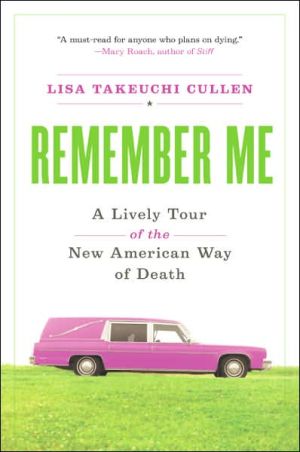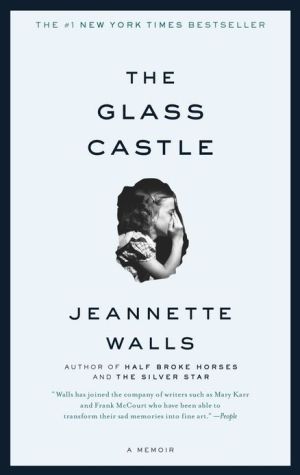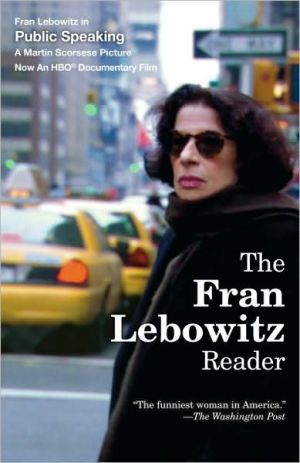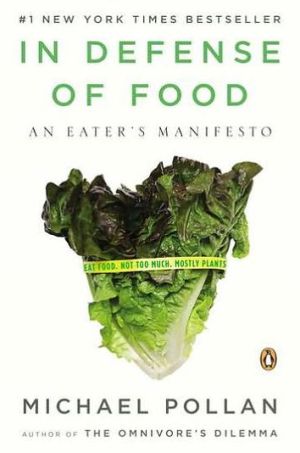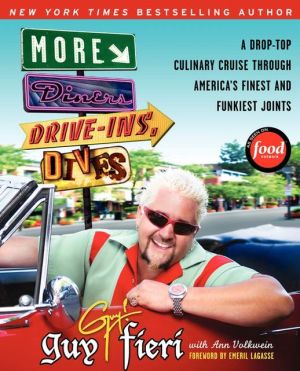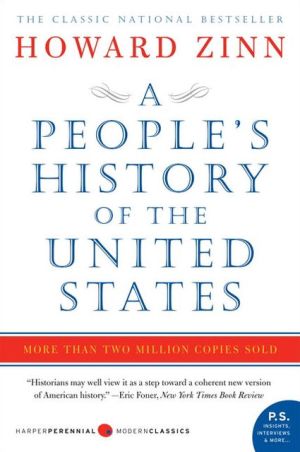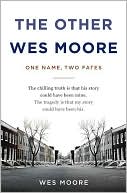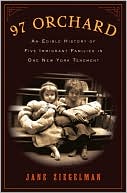Remember Me: A Lively Tour of the New American Way of Death
In Remember Me, Time writer Lisa Takeuchi Cullen has created a humorous and poignant chronicle of her travels around the country to discover how Americans are reinventing the rites of dying. What she learned is that people no longer want to take death lying down; instead, they're taking their demise into their own hands and planning the afterparty.\ Cullen hears stories of modern-day funerals: lobster-shaped caskets and other unconventional containers for corpses; cremated remains turned into...
Search in google:
In Remember Me, Time writer Lisa Takeuchi Cullen has created a humorous and poignant chronicle of her travels around the country to discover how Americans are reinventing the rites of dying. What she learned is that people no longer want to take death lying down; instead, they're taking their demise into their own hands and planning the afterparty. Cullen hears stories of modern-day funerals: lobster-shaped caskets and other unconventional containers for corpses; cremated remains turned into diamonds; and even mishaps like dove releases gone horribly wrong. Eye-opening, funny, and unforgettable, Remember Me gives an account of the ways in which Americans are designing new occasions to mark death—by celebrating life. Publishers Weekly This intriguing survey of America's rapidly mutating funeral customs probes the one force mightier than death: consumerism. Journalist Cullen explores the innumerable ways in which funerals are being personalized, publicized, economized, commercialized, trivialized and, perhaps, humanized. Among the many offbeat memorials she unearths are funerals with Hawaiian, tango or Harley-Davidson themes, as well as beer-themed caskets, eco-friendly funerals, "human diamonds" manufactured from a loved one's ashes, and a Colorado town that celebrates a do-it-yourself cryonics pioneer with its Frozen Dead Guy Days Festival, now a major tourist attraction. In the middle of it all, she finds, is an uneasy funeral industry, squeezed at the bottom by cheap Chinese caskets and the vogue for no-frills cremation and challenged at the top by finicky boomer customers demanding more elaborate and symbol-laden rites (one poignant graveside dove-release attracted a passing hawk, with off-message results.) Cullen isn't much given to muckraking or dark pens es; "Death is a big, huge bummer" is as morbid as she gets. Her set-piece retrospectives on the guests of honor at unusual send-offs sometimes seem dully eulogistic. But for the most part her vivid reportage and wryly sympathetic tone feel anything but embalmed. (Aug.) Copyright 2006 Reed Business Information.
BREDO MORSTOEL\ 1900–1989 (AND BEYOND) In a town called Nederland, Colorado, outside a nuclear- bomb-proof house, inside a Tuff Shed, at the bottom of a large freezer, next to a half-eaten birthday cake, lies the body of Bredo Morstoel. Or so I’d heard. The story had been told and told again. Bredo Morstoel had died at age eighty-nine in his native Norway. His daughter Aud and his grandson Trygve Bauge had flown his body to Colorado, where the two were then residing. But Trygve, a budding entrepreneur in the field of cryonics, had decided to keep Grandpa around. Grandpa Bredo died in 1989, and in 2005 his body is still on ice in a Tuff Shed in Nederland. When I first heard about Grandpa Bredo, I thought I would have to see for myself this curious experiment in human preservation. I thought Grandpa might teach me something about cryonics -- how it’s done, why we bother, what it says about us. But, as a townsperson says to me later, the preservation of Grandpa is the “1968 VW Bug of cryonics” -- hardly worthy of the scientific category, even such as it is. What I stumbled into instead was a curious experiment in death celebration, or the story of a community that initially recoiled from death but came to embrace, laugh at, and profit from it. What I stumbled into was the Frozen Dead Guy Days festival. Nederland is a no-stoplight town twenty miles west of Boulder, 8,233 feet above sea level. One spaghetti of a road takes you there, twisting and turning as it slithers up the snow-capped mountain. I am the white-knuckled, baby-on-board driver creeping up that road in an economy-size rental car as four-wheel-drive SUVs pile up behind me. The town has one inn and one supermarket and 1,380 residents -- a disproportionate lot of them, shall we say, different. There’s Toasty Post and the Iceman, and then there’s Amy the ghost buster (more on her later). In a recent mayoral race, the field of candidates included a convicted felon and a dog. It takes serious eccentricity to stand out in that company, as Trygve Bauge did -- or, more important, it takes PR. Trygve was already known in the Boulder area for his self-publicized exploits running from immigration authorities (to avoid deportation for overstaying his visa) and staging a mock hijacking prank at the airport (to -- oh, who knows why). The skinny, long-haired Norwegian eventually drifted up to Nederland to build his dream home: a concrete-and-metal bunker that would withstand nuclear, biological, and alien attack. No one can remember Trygve ever holding a job. He seemed too busy pursuing his two passions: ice-bathing, in which he claims to hold the world record at one hour, five minutes and fifty-one seconds, and the practice of what he calls “life extension.” Which brings us back to Grandpa Bredo. Not a whole lot is known about Bredo Morstoel, at least to the people of Nederland, being that he took up residence here only after his death. In the one photograph I’ve seen, he has tufty white eyebrows and ruddy skin, and he’s squinting at the camera. He worked for the parks department in Norway, was married, and had two children. He liked to paint, fish, ski, and hike. During a family vacation in the mountains in 1989, Bredo had a heart attack while napping and died. I learn much of this through the sleuthing of Barbara Lawlor. Lawlor is Nederland’s Lois Lane, a one-woman media machine whose byline accompanies virtually every article and photograph in the weekly Mountain-Ear. Lawlor is deeply tanned and white haired and looks as if she could hike to Boulder and back in under an hour. A Wisconsin native who took the reporting job to support her four adopted children, she’s not one to suffer fools -- but a story is a story, so she wearily took Trygve’s incessant calls. It was Lawlor he called to witness his record-breaking polar-bear dip in an ice-filled cistern wearing a pair of boxers and a Norwegian flag. It was at Lawlor’s door that Trygve turned up one night demanding sanctuary from immigration officials. And, soon after Trygve was finally deported in 1994, it was Lawlor his mother, Aud, called with an odd and disturbing request. “I remember it was Mother’s Day,” says Lawlor. “Aud came to me, crying, saying something about going down to Town Hall and getting help putting dry ice on her father.” After some questioning, Aud explained the situation. Lawlor knew this was more than just a scoop. “Well, I went to Town Hall for her and said, ‘There’s a dead body on this property,’ and they went nuts, and that’s how it all started.” Police and town officials raced up the dirt roads to Trygve’s bunker. Sure enough, in a Tuff Shed a few feet from the house was a wooden sarcophagus containing a lot of ice and the body of Bredo Morstoel. It also held the intact remains of one Al Campbell of Chicago, apparently the first paying customer of Trygve Bauge’s backyard cryonics lab. All hell, as they say, broke loose. The dailies and the wires beat Lawlor’s weekly to the story, and within days Norwegian camera crews were camped out on Lawlor’s floor. COLORADO TOWN FINDS 2 BODIES ON ICE; MAN HOPED TO REVIVE THEM, read a May 12, 1994, Chicago Tribune headline. The Associated Press followed up with frozen bodies get chilly reception from town leaders. Chilly? Nederlanders were horrified that their bucolic mountain town was now known in England and Japan for its resident frozen dead guy. In an emergency session of the Nederland Town Council, officials slapped together an ordinance heretofore outlawing the storage of dead human or animal parts on residential property -- thereby effectively banning pork chops from freezers. The law didn’t affect Grandpa, who, as locals like to say for the yuks, was grandfathered in. So Grandpa Bredo remained in Nederland, outside a nuclear-bomb-proof house, inside a Tuff Shed, at the bottom of a large freezer, next to a half-eaten birthday cake. (Campbell’s body was immediately shipped back to Chicago.) The Tuff Shed is new and improved, donated by the company.The rickety wooden sarcophagus has been replaced by a stainless-steel box. The bombproof house is currently uninhabited, but a local hired by Trygve visits Grandpa every five weeks to replenish his bed with eight hundred pounds of dry ice. Or so I’d heard.
\ From Barnes & NobleBarnes & Noble Discover Great New Writers\ Since Jessica Mitford's groundbreaking work was published in 1963, the "American way of death" has undergone extraordinary changes. Or has it? Surprisingly few, in fact, according Mitford in her 1998 follow-up. But journalist Cullen points out that while lawsuits and legislation may or may not change things, baby boomers certainly will. Right now, 2.4 million people die each year. By 2040, that figure will double -- a huge market driven by a group used to having things their own way, from food to fashion to religion to culture, and yes, even death. \ \ More Six Feet Under than Mitford-style exposé, Remember Me is Cullen's eye-opening account of the strange and often bizarre ways Americans are reinventing the practices and rituals of death. How do people view their options? What about a "green" burial -- affordable and environmentally friendly? Or perhaps, turning a loved one's "cremains" into cufflinks or a nice brooch? Who would choose to become a mortician? \ \ Trolling the "death care" industry's convention halls and crashing dozens of funerals, Cullen met the consumers of death and its merchants, and listened to their stories without judgment. The result is a lively, rollicking, and unfailingly absorbing account of how we Americans, whether we like it or not, are preparing for the end. (Fall 2006 Selection)\ \ \ \ \ Cathi Hanauer"Subtly funny, impeccably researched, and utterly fascinating . . . the liveliest book about death ever written."\ \ \ Mary Roach"A must read for anyone who plans on dying."\ \ \ \ \ Publishers WeeklyThis intriguing survey of America's rapidly mutating funeral customs probes the one force mightier than death: consumerism. Journalist Cullen explores the innumerable ways in which funerals are being personalized, publicized, economized, commercialized, trivialized and, perhaps, humanized. Among the many offbeat memorials she unearths are funerals with Hawaiian, tango or Harley-Davidson themes, as well as beer-themed caskets, eco-friendly funerals, "human diamonds" manufactured from a loved one's ashes, and a Colorado town that celebrates a do-it-yourself cryonics pioneer with its Frozen Dead Guy Days Festival, now a major tourist attraction. In the middle of it all, she finds, is an uneasy funeral industry, squeezed at the bottom by cheap Chinese caskets and the vogue for no-frills cremation and challenged at the top by finicky boomer customers demanding more elaborate and symbol-laden rites (one poignant graveside dove-release attracted a passing hawk, with off-message results.) Cullen isn't much given to muckraking or dark pens es; "Death is a big, huge bummer" is as morbid as she gets. Her set-piece retrospectives on the guests of honor at unusual send-offs sometimes seem dully eulogistic. But for the most part her vivid reportage and wryly sympathetic tone feel anything but embalmed. (Aug.) Copyright 2006 Reed Business Information.\ \ \ \ \ Kirkus ReviewsA fresh and funny look at what's new in funerals. Time magazine staff writer Cullen conducted her personal, on-site survey of funeral rites and after-death practices while pushing her infant daughter along in a stroller or toting her around in a backpack. Here she uses the present and past tense to distinguish between what she observed firsthand and what was described to her by event organizers or by friends or relatives of the deceased. A stroll through a funeral directors' convention introduces the merchandising of death and personalized services. The roles of funeral directors and party planners have merged into a new profession, Cullen reports: that of funeral planners, who arrange celebrations that bring people together to honor and memorialize the deceased. With cremation gaining popularity, some businesses, such as flower shops and casket-makers, are declining or under threat, and whole new industries are popping up. Cullen visits a woman who has chosen to have her husband's ashes made into a diamond she can wear; helps a pilot scatter ashes from his plane; and attends a burial at sea for which ashes have been mixed into concrete to form artificial reefs. Other options are freezing and mummification, a process she doesn't witness but describes graphically. She also observes classes at a New York mortuary school, where she finds that education is not keeping pace with the changes that are sweeping the business. The traditional rituals of a lavish Hmong funeral she attends in Minneapolis are fascinating, yet they are outmatched by her moving account of her Buddhist grandfather's funeral in Japan. In one unforgettable scene in this often lighthearted book, the author and her familyuse chopsticks to pick up the recognizable remains of the cremated body, starting with the feet and working upward, and place them in an urn. While occasionally flippant and straining to be clever, Cullen is mostly an amiable guide, and her tour is enjoyable and enlightening.\ \
